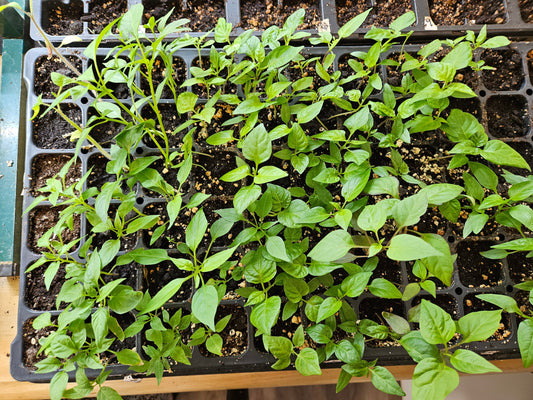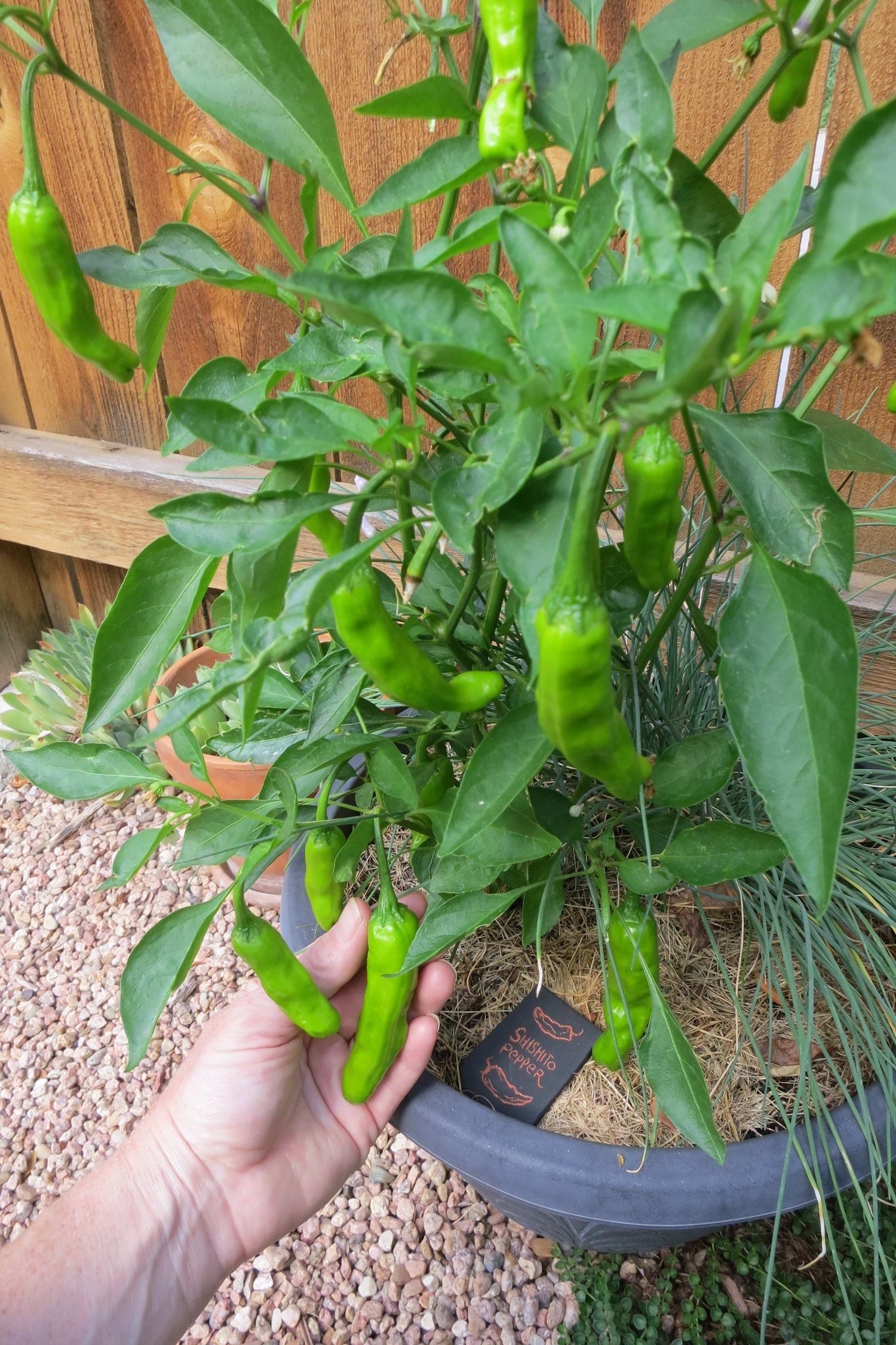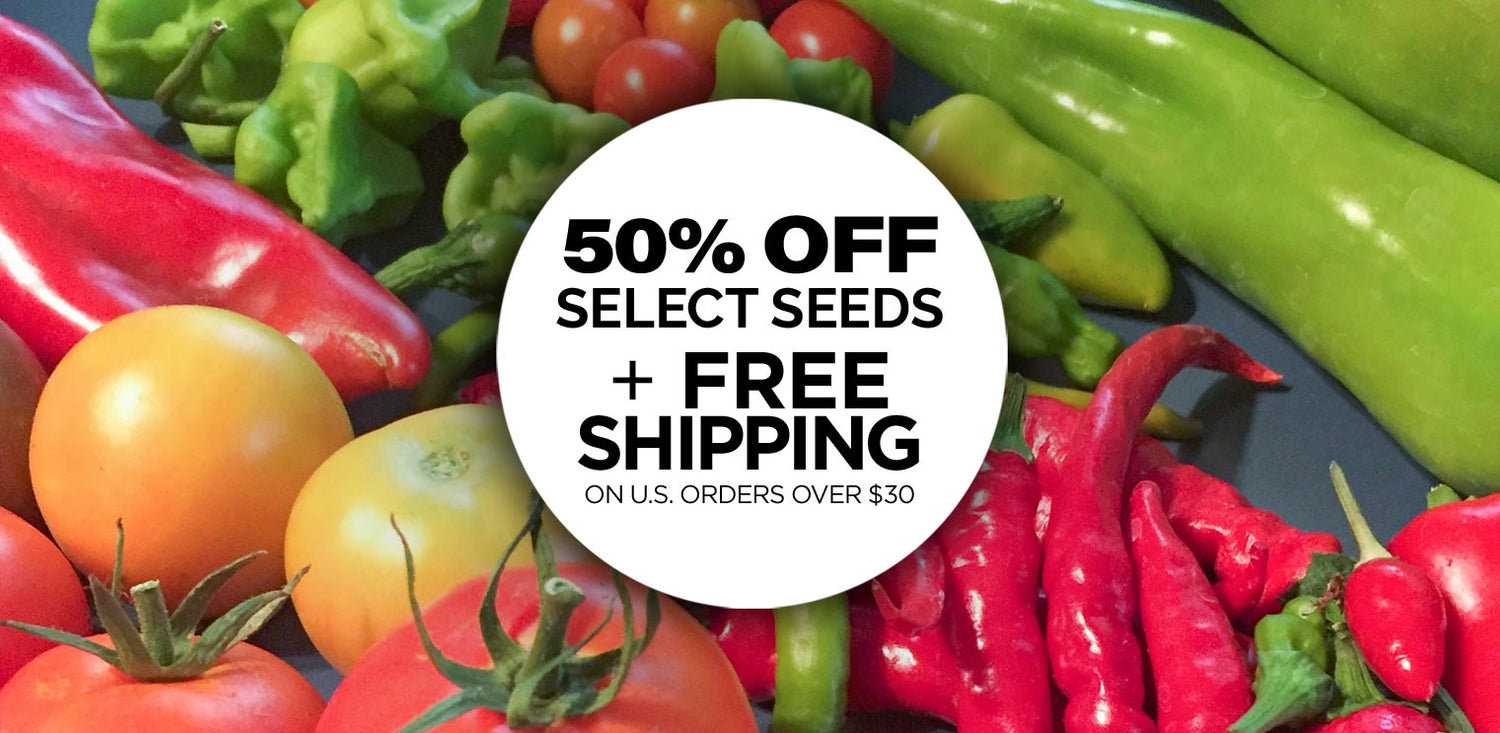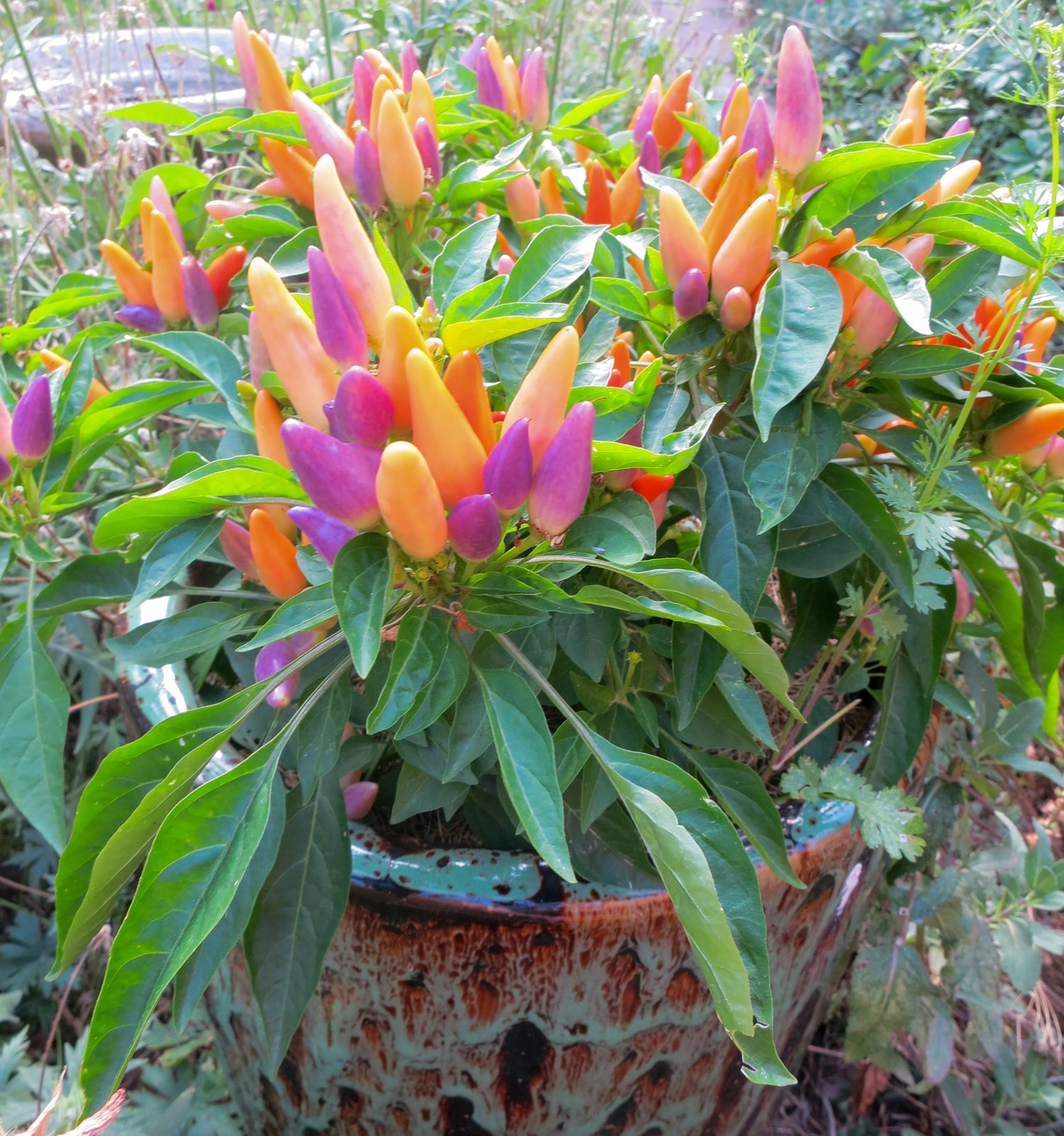
Sandia Seed specializes in Red Pepper Seeds – ranging from Super Hot Peppers like the hottest pepper in the world, the Carolina Reaper... to deliciously Sweet Peppers such as Pimento Seeds, or the Italian treasure: the Jimmy Nardello, as well as the open-pollinated Stocky Red Rooster which is a super flavorful frying pepper.
Red Pepper Seeds are easy to grow!

Yes, pepper seeds are actually quite easy to grow into productive beautiful plants in your garden. Peppers can be grown in large containers or in the ground in full sun anywhere you'd grow other vegetables like tomatoes. We even have a partial-shade tolerant pepper that is suited to gardens that have more shade, such as those with trees or buildings that block the sun for a portion of the day.
When to start Red Pepper Seeds:
We usually start all of our seeds indoors in January/February to get them a nice head start before transplanting outdoors once the temperatures have warmed up to around 60˚ F or warmer for the season in New Mexico. But, depending on where you live, you could grow peppers year-round in more temperate climates, and some gardeners such as those in Phoenix actually grow the in the fall/winter/spring months as the summers get too hot.  The secret to germinating pepper seeds is to keep them warm! All red pepper seeds, but particularly the super hot peppers like to be kept between 80˚-90˚ F when sprouting. Using a heat mat or keeping them in a warm location such as the top of the fridge will help your red pepper seeds sprout much faster and you'll have a much higher success rate than if germinating at 70˚ or cooler. Once they sprout, it's good to brush them with your hands or put a small fan on them to keep the air circulating, this will help prevent dampening-off of the seedlings, which is a common seedling ailment.
The secret to germinating pepper seeds is to keep them warm! All red pepper seeds, but particularly the super hot peppers like to be kept between 80˚-90˚ F when sprouting. Using a heat mat or keeping them in a warm location such as the top of the fridge will help your red pepper seeds sprout much faster and you'll have a much higher success rate than if germinating at 70˚ or cooler. Once they sprout, it's good to brush them with your hands or put a small fan on them to keep the air circulating, this will help prevent dampening-off of the seedlings, which is a common seedling ailment.
Once they're bigger, you may want to transplant them if in small starting pots or if you're growing them hydroponically to allow them to grow indoors until it starts to warm up enough outside (60˚ at night). Red peppers don't like to be cold, if temperatures at night or during the day are below 50˚, their growth will be stunted until it warms up for the season. Water Walls are also great for keeping pepper seedlings warm to give them a better head start and allowing for earlier planting.
Make sure to harden off your red pepper seedlings before planting outdoors, this is a simple process of allowing them to be outside for a few hours to start, then gradually increasing their time outside until you've left them out overnight for a day or more. This will let them develop stronger limbs from the natural breezes, and also let them get used to the much brighter outdoor sun. Then you can transplant them into your garden or large containers.
Don't overwater your Red Pepper plants! No peppers like wet feet, so make sure to let the soil dry out slightly between waterings. The soil should never be soggy, and should be well-draining. 
Mulch & Compost:
We find in our arid climate that mulch helps keep the moisture in the soil more consistent, plus it cuts back on weeds and feeds the worms, which, in turn, feed our plants. We also love to add homemade compost to our gardens every spring, and also to topdress with some aged compost throughout the season (being careful not to put compost too close to them stems of plants). Homemade compost really helps fertilize your plants in a natural way, and it's better than store-bought, which is sterile and has no live worms and other creatures that help build your soil to be dark and rich.
Learn more about How to Grow Peppers »





















